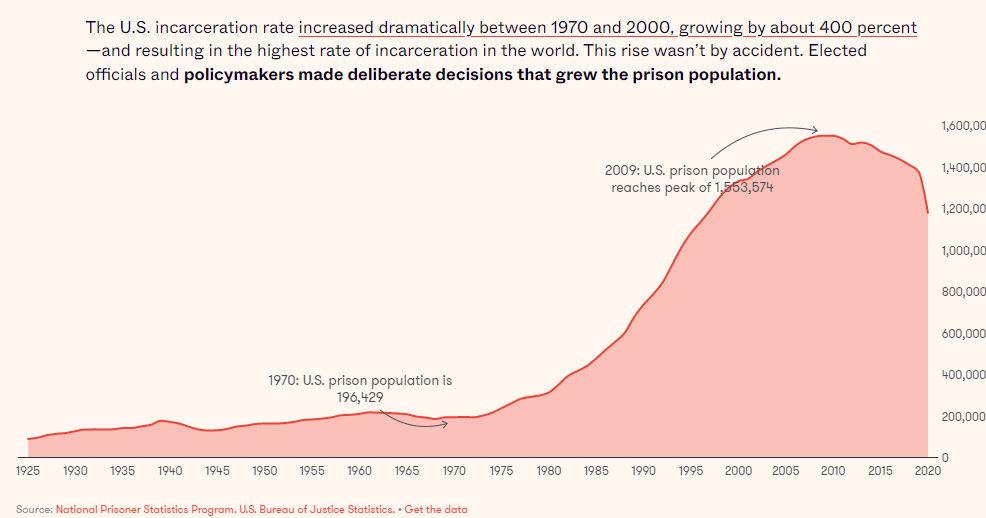Ending Mass Incarceration; Does More Policing Lead to Less Crime?
The benefit of more policing must be weighed against the social costs

The rise of mass incarceration may seem like a recent phenomenon, but it is a repeating pattern throughout this country’s history. From America’s founding to the present, there are stories of crime waves or criminal behavior followed by patterns of disproportionate imprisonment of those forced to the margins of society: Black people, immigrants, Native Americans, refugees, and others.
The result has been the consistent and disproportionate impact of incarceration on people of color, immigrants and people experiencing conditions of poverty. From 1850 to 1940, racial and ethnic minorities, including foreign-born and non-English speaking European immigrants, made up 40 to 50 percent of the prison population. In 2015, about 55 percent of people imprisoned in federal or state prisons were Black or Latino.
In recent years, there are initial indicators of a decrease in incarceration rates. Work remains to ensure those decreases are consistent and progressing toward ending the decades-long practice, and related harms, of mass incarceration.
Policymakers and the public remain engaged in a tug-of-war on how best to address crime, and the basic assumption to address that is "more cops." Traditional, if outdated, cost-benefit analyses usually find policing to be “cost-effective,” meaning it creates benefits that exceed its costs. Yet a range of policing activities can result in “social costs” that are not typically considered and most certainly demonstrate a long-term financial cost that offsets whatever short-term, "cost-effective" measures were assumed. As a result of increased police activity, people can suffer physical and behavioral health problems; lose educational opportunities, jobs, and housing; and withdraw from civic engagement.
Second verse, same as the first; those social conditions are the very facets that have historically contributed to increased incarceration rates.
The Vera Institute of Justice published "The Social Costs of Policing," a report highlighting the effect that policing has on public safety while including the social costs of policing that make communities less healthy and prosperous.
You can read and download the full PDF of
"The Social Costs of Policing," as well as the study's
Fact Sheet.










